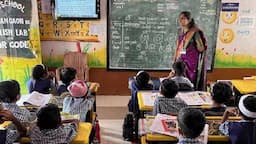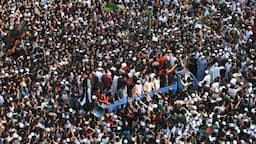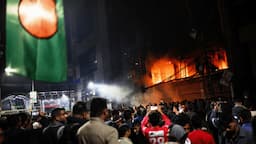Migration, the movement of individuals across borders or within nations, is a key characteristic of the interconnected world.
It is motivated by opportunity, need, or ambition, and affects economies, cultures, and governance worldwide.

Categories:
Internal Migration: Inside a nation (rural–urban, state-to-state, within a state).
Global Migration: Relocation between nations.
Voluntary vs Coercive: Preference-driven (employment, schooling) vs pressure-induced (war, environmental issues, oppression).
Seasonal/Circular Migration: Temporary, frequently associated with agriculture, construction, or informal employment.
Migration should be safe, orderly, and humane, in accordance with the UN's Sustainable Development Goals (SDG Target 10.7).
Trend in Immigration
Global Migration: The World Migration Report 2024 states that there were around 281 million international migrants in 2020 — roughly 3.6% of the world’s population — an increase from 2.8% in 2000.
Migration pathways have developed, with the Mexico–USA, Syria–Türkiye, and India–UAE routes being among the most significant.
India, Mexico, and China rank as leading countries of origin, whereas the U.S. continues to be the primary destination and the biggest country for remittances.
Migration in India: India ranks as the top source country for global migrants, with more than 18 million Indians residing overseas.
The 78th Round of NSSO discloses:
Marriage accounts for the majority of migration (68.2%), with employment coming next at 22%.
The most important internal migration route is from Uttar Pradesh to Maharashtra.
Suburban areas of Mumbai, Pune, and Thane have the largest population of migrants.
Migration, the relocation of people across borders or within countries, is a significant feature of the interconnected globe.
Driven by opportunity, necessity, or aspiration, it influences economies, cultures, and governance globally.
Classes:
Internal Relocation: Within a country (rural to urban, state-to-state, or intrastate).
Worldwide Migration: Movement across countries.
Voluntary versus Coercive: Choice-based (jobs, education) versus force-driven (conflict, climate challenges, subjugation).
Seasonal/Circular Migration: Temporary, often linked to agriculture, construction, or casual employment.
Migration must be secure, systematic, and compassionate, in line with the UN's Sustainable Development Goals (SDG Target 10.7).
Tendency in Migration
Global Migration: The World Migration Report 2024 indicates that in 2020, there were approximately 281 million international migrants — about 3.6% of the global population — up from 2.8% in 2000.
Migration routes have emerged, with the Mexico–USA, Syria–Türkiye, and India–UAE pathways being among the most important.
India, Mexico, and China stand out as top countries of origin, while the U.S. remains the main destination and the largest source of remittances.
Migration in India: India holds the position of the leading source nation for international migrants, with over 18 million Indians living abroad.
The 78th Round of NSSO reveals:
Marriage represents the largest share of migration at 68.2%, while employment follows at 22%.
The primary internal migration path is from Uttar Pradesh to Maharashtra.
The highest number of migrants resides in the suburban regions of Mumbai, Pune, and Thane.
Path Forward
Compassionate & Inclusive Policies: Acknowledge migration as a privilege and chance, rather than a danger.
Protect electoral rights (Amartya Sen’s issue with SIR).
Enhance Social Safety: Universal transferability of PDS, healthcare, education.

Legal safeguards for informal laborers.
Equitable Regional Progress: Allocate resources to rural facilities, agro-processing, and small municipalities to lessen forced migration.
Urban Development: Cost-effective housing, sanitation, and transportation to sustainably accommodate migrant influx.










-1920x1080.jpg&w=256&q=75)





